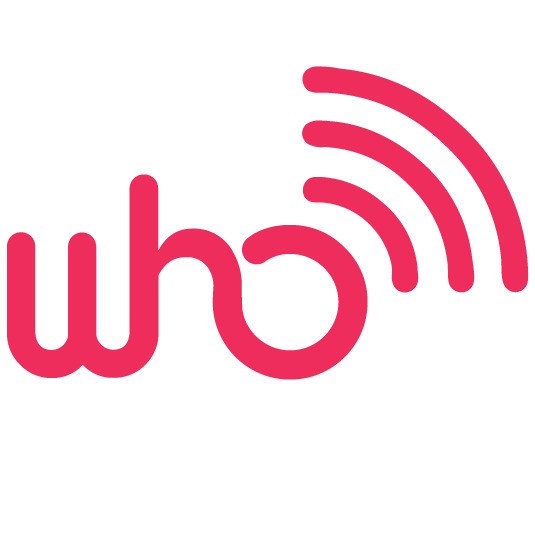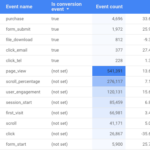Trying to wrap your brain around SEO, PPC, CTA, or an abbreviation you just heard in a meeting? Check out our list of the top Digital Marketing Acronyms and start understanding this complex field today.
- SEO: Search Engine Optimization – is the study of improving the ranking of a website on search engines like Google. When people search for specific key phrases or questions related to a product or service that a business offers, the goal of SEO is to make the website appear as high as possible in the search results list. This is accomplished through a variety of techniques, such as using specific topic and intent on the website, creating high-quality content, and earning backlinks from other reputable websites.
- A/B Testing: Split Testing – is a method of comparing two versions of an ad, landing page, or other digital asset to determine which one performs better. It is used to optimize the design and content of a form, ad, or landing page in order to increase conversions and achieve specific marketing goals. In an A/B test, one version of an ad or landing page (the “A” version) is shown to a group of users (the control group), while a second version (the “B” version) is shown to a different group of users (the treatment group). The two versions are identical except for one or more specific elements that are being tested, such as the layout, copy, or images. By comparing the performance of the two versions, marketers can determine which version is more effective at achieving the desired outcome.
- API: Application Programming Interface – is a set of programming instructions that allow software to interact with other software. APIs can be used to access data or functionality from another application. They are often used to connect two or more applications so that they can share data or functionality for Marketing reports and analysis.
- CCPA: California Consumer Privacy Act – is a privacy law in the U.S. state of California. It gives California residents the right to control their personal data and requires businesses to be transparent about how they collect, use, and share personal data. Under the CCPA, businesses are required to disclose to consumers what personal data they have collected about them, as well as the purposes for which it was collected.
- CMS: Content Management System – is a software platform that allows businesses to create, manage, and publish digital content, such as website pages, blog posts, and online documents. A CMS typically includes tools for creating and formatting content, as well as for storing and organizing it in a central repository.
- CPA: Cost Per Acquisition – in marketing is a type of metric that measures the cost of acquiring a customer or lead through various advertising channels. It is calculated by dividing the total amount spent on an ad campaign by the number of people who completed a desired action, such as signing up for an email list or making a purchase. CPA is commonly used to measure the effectiveness of online advertising campaigns and to compare them to traditional media channels such as television and radio.
- CPC: Cost Per Click – is a pricing model used in online advertising, where the advertiser pays each time their ad is clicked. It is a way of purchasing visits to a website, rather than earning those visits organically or through other marketing channels.
- CPL: Cost Per Lead – is a pricing model used in online advertising, where the advertiser pays a fee each time a user takes a specific desired action, such as filling out a form or signing up for a newsletter. CPL is used as a way to compare the relative cost of different advertising campaigns, and to determine the budget required to generate a desired number of leads.
- CPM: Cost Per Thousand Impressions – is a measure of the cost of an advertising campaign in which the advertiser pays for every thousand times their ad is displayed (impressions). CPM is often used to calculate the cost of displaying an ad on a website or other digital platform. For example, if an advertiser pays $2 CPM for their ad and the ad is displayed 10,000 times, the cost of the campaign would be $20 (10,000 / 1,000 * $2). CPM is typically expressed in terms of the cost of 1,000 impressions, hence the name “cost per thousand.”
- CRM: Customer Relationship Management – describes software that helps businesses manage their interactions and relationships with customers. It can be used to track sales and marketing data, as well as manage customer communications. CRMs can be used to help businesses improve their customer service, increase sales, and better understand their customers.
- CRO: Conversion Rate Optimization – is the process of improving the percentage of website visitors who take a desired action, such as making a purchase or filling out a form. The goal of CRO is to increase the number of conversions on a website, by making it as easy as possible for visitors to take the desired action. There are many factors that can affect a website’s conversion rate, such as the design of the website, the clarity of the call-to-action (CTA), and the relevance of the content to the visitor. By improving the conversion rate of a website, businesses can increase their revenue and achieve their online marketing goals more efficiently.
- CTA: Call-To-Action – is a statement, button, or banner on a website that encourages a user to take a specific action. The goal of a CTA is to convert website visitors to do something, such as make a purchase, sign up for a newsletter, or download a piece of content. It’s important for CTAs to be clear and specific, so that visitors know exactly what action they are being asked to take.
- CTR: Click-Through Rate – is a measure of how often people who see an advertisement or other type of content on the internet actually click on it. It is calculated by dividing the number of clicks an ad or piece of content receives by the number of times it is shown (also known as impressions).
- DFY: Do It For You – services are those where the company takes care of everything for the client or customer.
- DMP: Data Management Platform – is a software platform that allows businesses to collect, store, and analyze large amounts of data from various sources. In the context of digital marketing, a DMP can be used to manage and analyze data about a business’s customers, prospects, and marketing campaigns by providing insights into customer behavior and preferences.
- DWY: Do It With You – services are those where the company provides the customer with guidance and assistance in completing a task or project.
- EEAT: Experience-Expertise-Authority-Trustworthiness – is a grade of how trustworthy your content is to visitors, which can help your website to rank higher in search engine results pages (SERPs).
- GDPR: General Data Protection Regulation – is a regulation in the European Union in the area of data protection and privacy. It sets out strict rules for how businesses and organizations can collect, use, and store personal data about EU citizens, and gives individuals the right to control their own personal data.
- KLT: Know-Like-Trust – is a marketing concept that refers to the process of building relationships with potential customers. It suggests that in order for a business to be successful, it must first establish itself as a knowledgeable and credible source of information, then build rapport and likability with its audience, and finally, earn the trust of its audience through consistent, high-quality interactions. KLT can be achieved through a variety of tactics, such as creating valuable content, interacting with users on social media, and delivering a positive customer experience.
- KPI: Key Performance Indicator – is a measurable value that demonstrates how effectively a website is achieving its key business objectives. KPIs are used to track the progress of a business towards its goals, and to identify areas of the business that may need improvement.
- LPO: Landing Page Optimization – is a process of improving the performance of a landing page, which is the first page users visit when arriving on a website. It involves analyzing different aspects of the page to identify areas for improvement, such as design, layout, content and usability. Optimizing the landing page can help increase conversions and improve user experience.
- MRR: Monthly Recurring Revenue – is a measure of the amount of revenue that a company can expect to receive on a monthly basis from its customers.
- NAP: Name, Address, Phone Number – is an abbreviation for three powerful pieces of local business information commonly found in directory listings, review sites, and other business profiles. Each element of the NAP trio is a crucial bit of information to a local consumer, making it easier for them to contact or visit you. Having a consistent NAP across all search engines brings increased authority to your site and is key to a good local SEO plan.
- PPC: Pay-Per-Click – is a type of online advertising where businesses pay a fee each time one of their ads is clicked. It’s a way of buying visits to your website, rather than earning those visits organically. PPC can be an effective way for businesses to get their website in front of potential customers who are searching for specific products or services. It allows businesses to target their ads based on factors like location, age, and interests set a defined budget, and only pay when their ads are clicked.
- ROI: Return On Investment – is a metric that measures the profitability of an ad campaign or marketing strategy. It is calculated by dividing the total revenue generated by the campaign or strategy by the total cost of the campaign or strategy. ROI can be used to compare different marketing campaigns or strategies to see which is more profitable.
- SERP: Search-Engine-Results-Pages – is the list of search results returned from a keyphrase search in a browser or app. It may include sponsored or PPC ads, organic search results, map listings, and other types of answers based on the intent of the query.
- UX: User Experience – refers to the overall experience of a person using a product, system, or service. In the context of digital products and services, such as websites and mobile apps, UX includes the user’s perception of the usability, ease of use, and enjoyment of the product.
Our favorite?
WHO: WHO Digital Strategy – is your marketing team providing online services and training to grow your brand.
Our industry continues to evolve and we find and use new acronyms everyday. If you hear of one and don’t know the meaning, reach out to our digital marketing training team and we can help make sure you find the best definition and understand how to apply it.







